Samsung Q70A review (55Q70A): dazzling HDR from an affordable 4K TV
The Samsung Q70A delivers the bold colours and punchy HDR you want from a QLED TV, for a great price
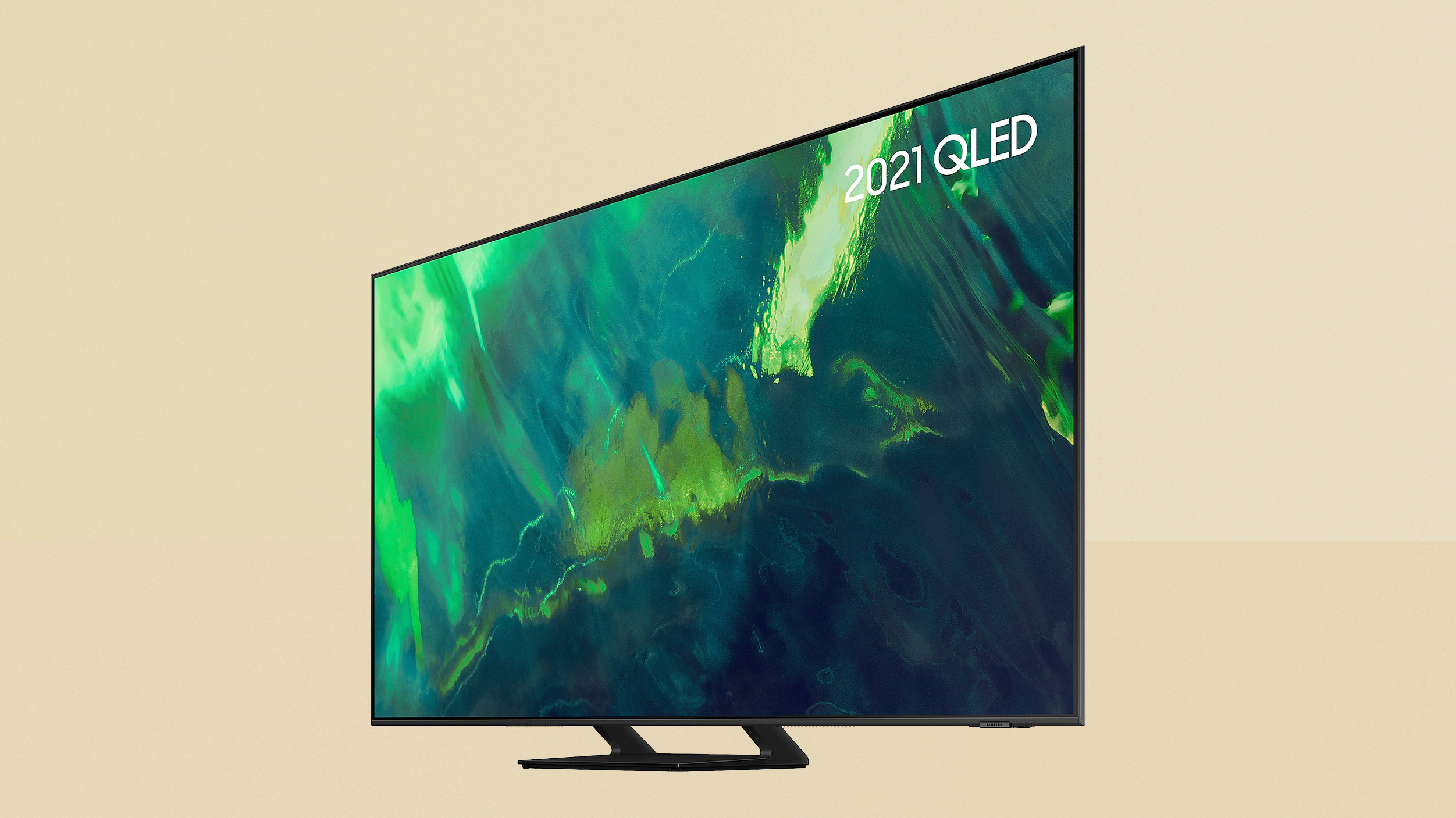
The Samsung Q70A offers big colours and bright HDR that's ideal for a brightly lit room. Middling contrast and limited viewing angles are a shame, but when you factor in the gaming features and excellent smart TV platform, it's a great value TV overall.
-
+
Bright HDR and bold colours for its money
-
+
Sharp 4K images
-
+
Comprehensive smart system
-
+
Good gaming features
-
-
Average black levels & backlight clouding
-
-
Default motion processing is messy
-
-
No Dolby Vision support
-
-
Limited viewing angles
Why you can trust T3

In this Samsung Q70A review, we're looking a QLED 4K TV that might be towards to lower end of Samsung's current range for price, but that still delivers the bright HDR and wide, involving colours that the sets are known for.
And the Samsung Q70A isn't just focused on the screen in order to bring the price down either – it's still packing plenty of eye-catching features up its sleeve to match the best Samsung TVs.
Still, the Quantum Dot colour system that contributes to its QLED name remains the biggest draw, promising richer and more accurate colour than you get with regular LCD colour systems – it's why so many QLED TVs appear in our list of the best TVs.
But the Samsung Q70A also supports pretty much all of the latest and greatest gaming features, including next-gen stuff optimised for the PS5 and Xbox Series X, meaning that it's a strong pick as one of the best gaming TVs in its price bracket. And it features Samsung's most advanced image processor, and its excellent smart TV platform – both the same as you'd find on its most high-end 4K TV, the Samsung QN95A.
To get all of these features in a big-screen TV that comfortably fits into the budget range of our guides to the best TVs under £1000 and best TVs under $1000 (for the 55-inch model, which is what we tested for this review) is even more impressive.
There are compromises, of course: you don't get the same deep and even black levels that makes the higher-end Samsung TVs so good, for example. But this is a great-value TV overall. Here's all the detail you need to make your decision.
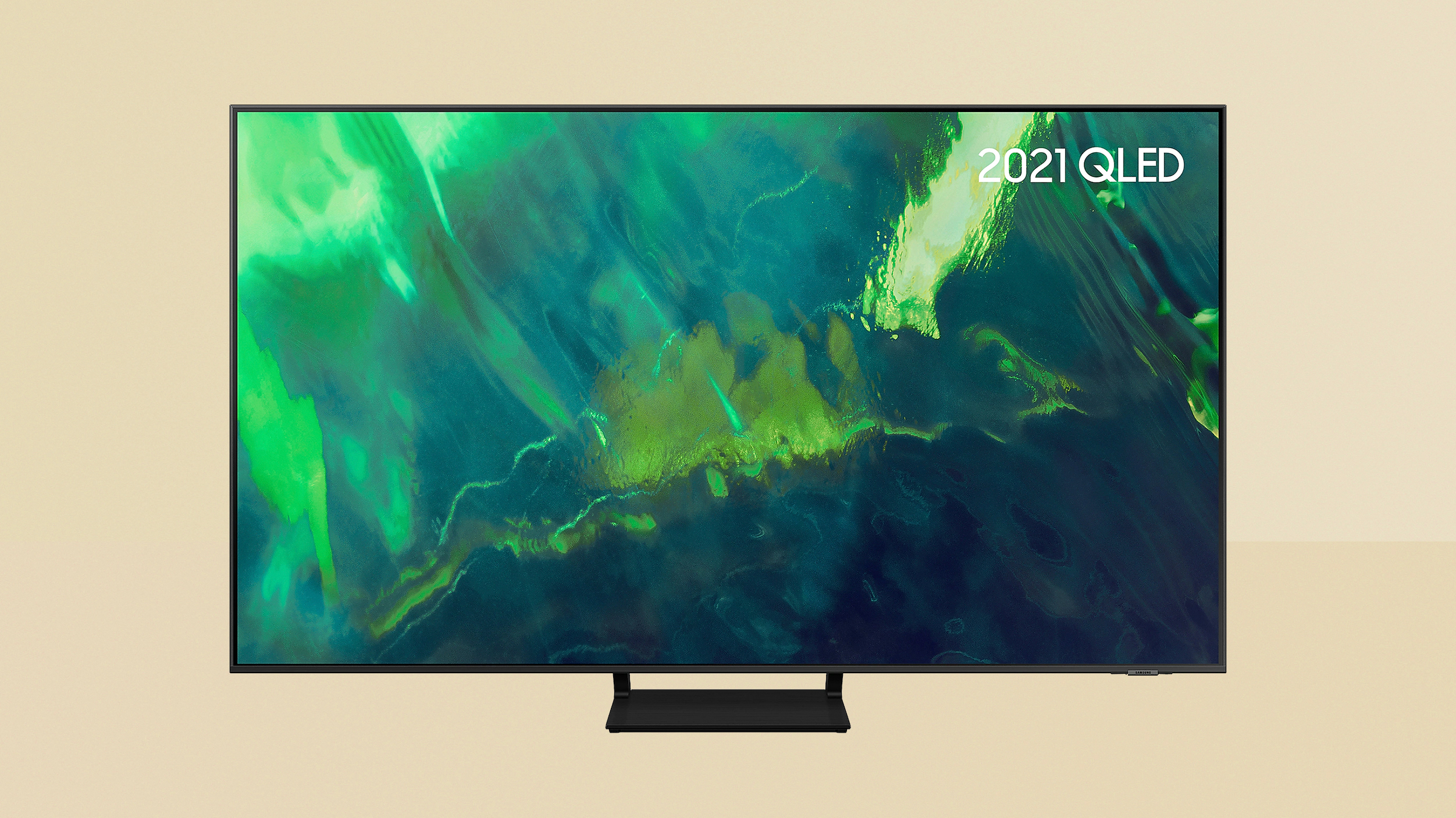
Samsung Q70A review: Price & release date
The Samsung Q70A was released in spring 2021, and is available in 55-inch, 65-inch, 75-inch and 85-inch sizes. It's a bit of a shame there isn't anything smaller, because this mix of screen quality and features would be excellent in a more bedroom-friendly 43-inch size.
Since its launch, its price has dropped by 30-40%, which is why it's a good contender on value now.
The current official price for the 55-inch 55Q70A version is £899/$849, the 65-inch 65Q70A is £1,299/$1,199/AU$, the 75-inch version is £1,799/$1,399 and the 85-inch model is £2,299/$2,699.
It's also worth checking our Samsung discount codes to see if you can save on your order.
Samsung Q70A review: Features & what's new
As a QLED TV, the Q70A's colours should benefit from more range and volume (volume being the combination of saturation and brightness) than regular colour filter LCD TVs. It uses a VA panel rather than an IPS one, too, which should result in a superior contrast performance. However, using a VA panel means that contrast and colour take a hit more quickly when you move away from viewing it straight on – though a low-level version of Samsung’s LCD wide viewing angle technology means things are a little better in this respect as expected. The Q70A is still a TV you’ll want to watch head on as much as you can, though.
Impressively for its money, one of the Q70A’s four HDMI ports is HDMI 2.1 specified, meaning that it can handle all the latest cutting edge video game graphics features. That is to say, variable refresh rates, automatic low latency mode switching, and high frame rates up to 120Hz with 4K games.
The VRR support extends officially to AMD’s Freesync Pro system as well as the standard HDMI VRR take, and unofficially Nvidia’s G-Sync system appears to work as well.
The TV even supports the super wide aspect ratios available with some PC games, as well as being able to pass the latest object-based sound systems via eARC technology to one of the best AV receivers or the best soundbars.
The Q70A’s’s Dual LED backlight means that the screen using two different types of LED: one delivering a ‘cool’ white tone and the other a warmer white. The idea being that having these two different white sources to draw on gives the screen much more room for manoeuvre when it comes to creating more accurate colour tones for different types of content.
Picture processing comes courtesy of Samsung’s latest Quantum Processor 4K chip, delivering such features as advanced upscaling of sub-4K content, Samsung’s motion processing system, dynamic contrast algorithms, high dynamic range tone mapping controls and an ‘AI’ picture feature that constantly optimises the picture in response to analysis of both the content you’re watching and your surroundings.
The processor also delivers Adaptive AI Sound+ technology, which again dynamically analyses both the sound content of what you’re watching and the audio characteristics of your environment to always, supposedly, give you the optimum sound quality.
The set supports Samsung's Q-Symphony feature too, which is where the TV’s speakers can work in tandem with compatible Samsung soundbars. Instead of the soundbar replacing the TV's speakers, the audio is split between them, for extra clarity. Samsung didn't follow the trend for offering built-in Dolby Atmos decoding on any of its TVs, though (this will change in the 2022 models, but don't expect Atmos support to be added to existing TVs).
The Q70A is a QLED TV, not a Neo QLED TV. This means it doesn’t enjoy mini-LED’s advantages when it comes to more local light control. In fact, it doesn’t even use direct LED lighting, where the LEDs sit right behind the screen. Rather it uses edge LEDs, where the lights are ranged down the sides of the TV’s screen – an approach that typically delivers reduced contrast versus the direct lighting approach. That's really the major change here to make it more affordable compared to Samsung's higher-end sets.
One other limitation of the Q70A is that while its HDR support covers the standard HDR10, HLG and HDR10+ formats, it doesn’t extend to Dolby Vision. So you can’t take advantage of Dolby Vision gaming from the Xbox Series X, or the Dolby Vision masters of films and TV shows found on numerous 4K Blu-rays and video streams. This is true of all Samsung TVs, though, including the higher-end options.
Smart features, finally, are provided by Samsung’s tried and tested Tizen system. This includes a comprehensive selection of video apps. UK users may be disappointed by a lack of Freeview Play support, though Samsung carries all the individual TV apps that live under the Freeview Play umbrella, so it's not a huge problem.
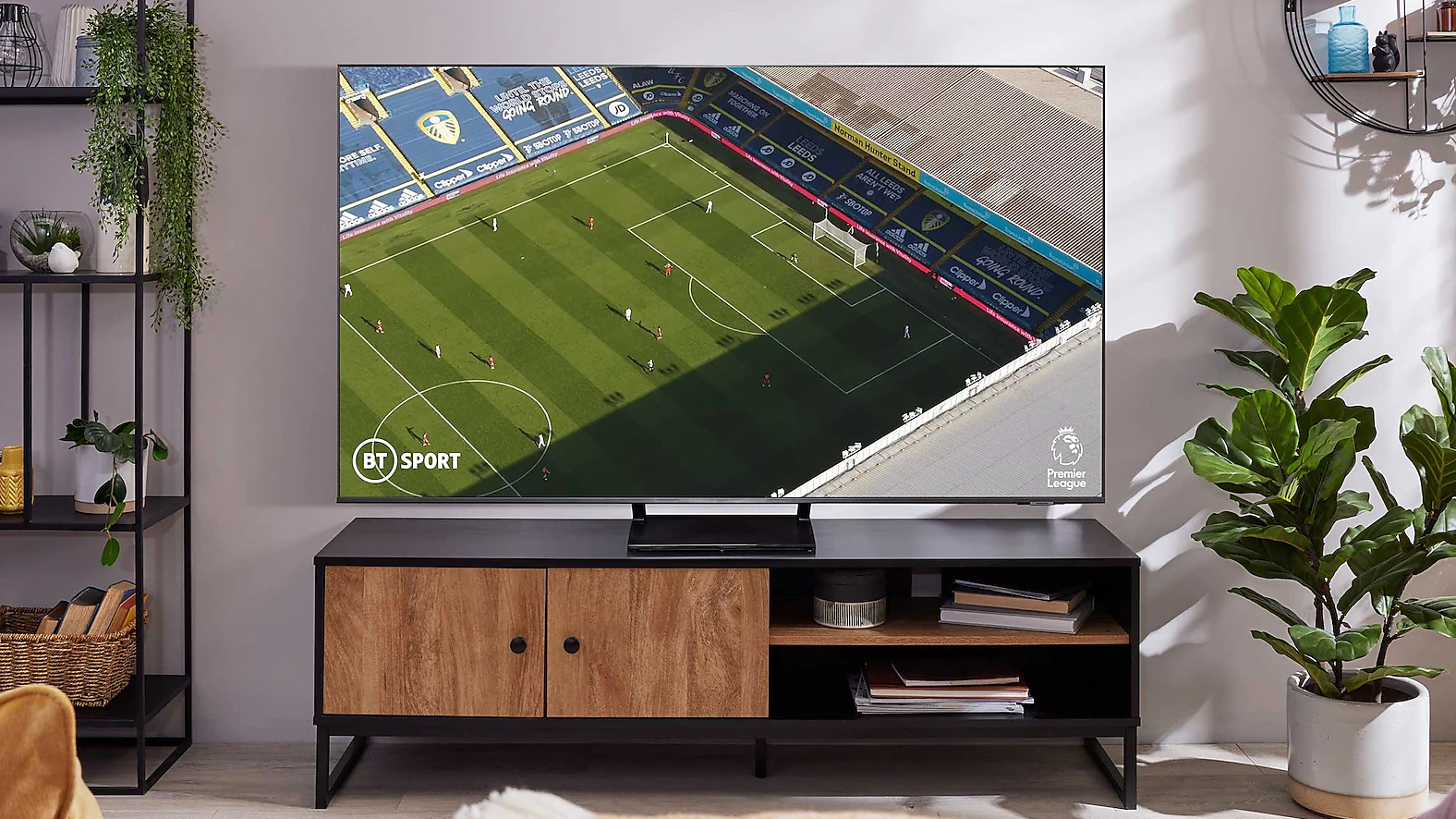
Samsung Q70A review: Picture quality
The first thing that strikes you about the Q70A’s pictures is how bright they can get for a TV at this price. This radiance holds up even when a bright images fills the majority of the screen, too; there’s no sudden drop off in the overall brightness as the brightness takes over more of the screen.
The Q70A can also handle intense HDR highlights despite using an edge LED lighting system, which inevitably doesn’t provide the sort of local light controls a direct LED TV with local dimming can.
To put some numbers on this, I measured a peak brightness output on a white HDR window occupying 10% of a black screen to be 660 nits. This is achieved in both the TV’s Dynamic and Standard picture presets. It drops to just under 570 nits in the more ‘accurate’ Filmmaker Mode and Movie mode presets, which deliver a flatter HDR experience. But all these figures are very respectable for a mid-range LCD TV.
The sort of brightness the Q70A provides feeds handily into its colour performance too, helping it hold on to rich, natural saturations at much higher brightness levels than most mid-range LCD TVs can. This again is key to delivering a convincing HDR experience – especially given that most HDR sources also build in wider colour ranges.
Detail levels are high with relatively static native 4K content, and the sharpness holds up reasonably well when there’s motion in the frame when using the TV’s Auto picture clarity setting. Samsung’s AI upscaling of sub-4K sources earns its corn too, delivering sharper, cleaner results than most rivals in its class.
The Q70A delivers a mostly engaging gaming performance, meanwhile. It handles VRR and 120Hz refresh rates with strong clarity and consistency, and colours are noticeably richer than you typically see on a 55-inch LCD at this price. It also takes just 9.5ms to render images when set to its Game picture preset, which is as low as it gets in the TV world.
While the Q70A ticks some key boxes that help its picture quality stand out from the mid-range crowd, it can’t completely escape its price-constrained specifications.
So, for instance, where an HDR titles carries really intense, aggressively mastered peak highlights, the baseline brightness of the image can take a noticeable hit as the TV seeks to accommodate a sense of the image’s extreme light range.
This can leave some HDR games, in particular, feeling a touch dull at times – though the results are still punchier and more well rounded than the norm for such an affordable LCD TV.
It can also prove difficult, predictably enough, for the TV to accommodate simultaneously its penchant for brightness and its edge LED lighting during dark shots. So, for starters, there’s obvious grey cloudiness hanging over dark images, especially with HDR content. This is particularly noticeable when you’re watching a wide aspect ratio film that generates black bars above and below the picture, or when you’re using the Movie and Filmmaker Modes, which deliberately limit the screen’s dynamic contrast controls. It’s an issue to a lesser extent with the other settings too, though.
The screen has a tendency in all picture presets to turn off the backlight completely during fade to blacks. While this certainly yields impressively deep blacks, the obvious brightness ‘jump’ as the backlight turns off and then back on again can be distracting.
You can also sometimes become aware of a delayed adjustment to image light levels during quick cuts from bright to dark images and vice versa if you’re not using the Filmmaker Mode or Movie presets, and there was some localised backlight inconsistency/clouding on the right hand side of our test sample.
So we can finish this section on an appropriately up-beat note, though, shadow detailing is still good despite the limited black level response, and colours hold up fairly well through the gentle grey wash over dark scenes.
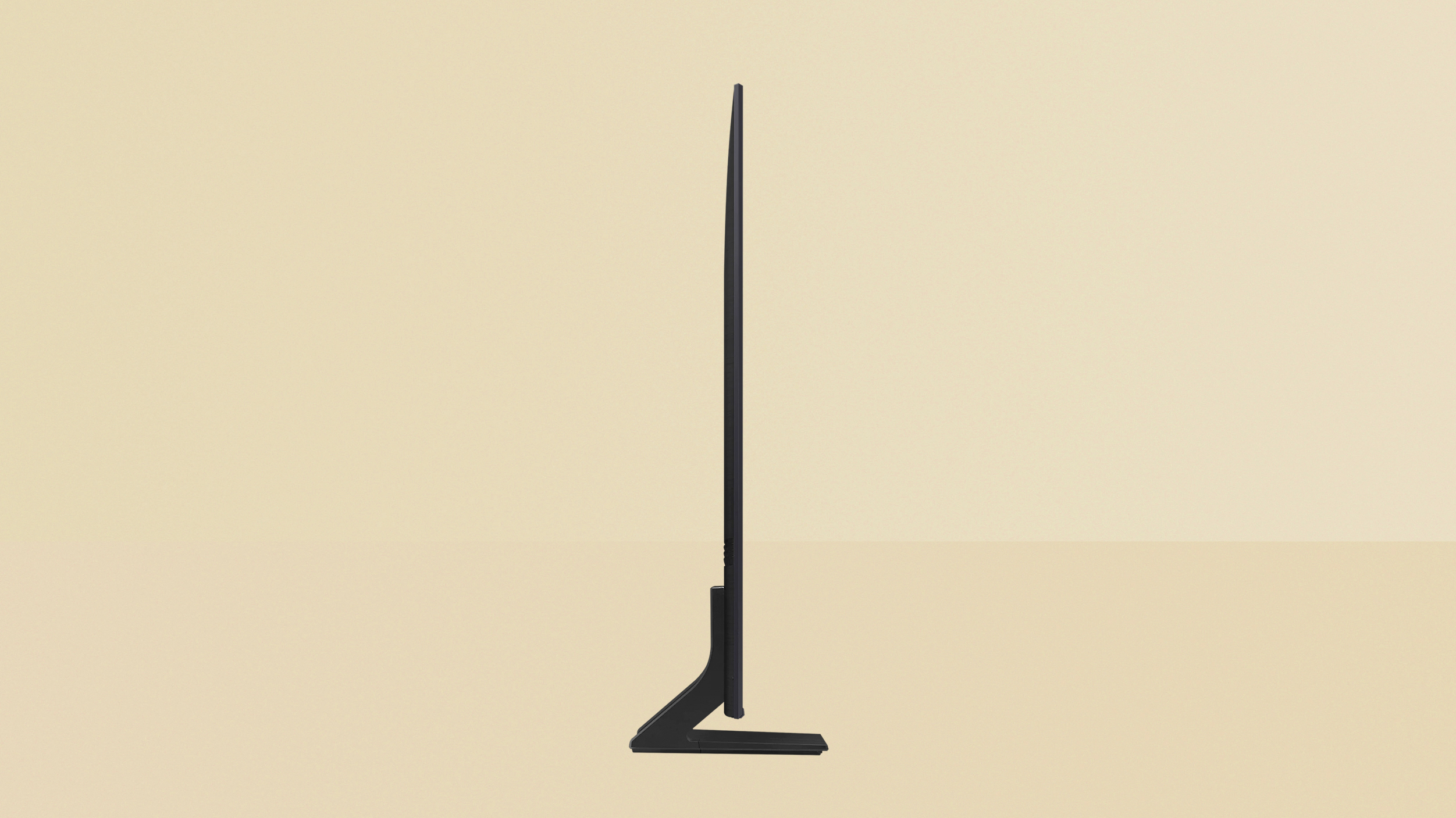
Samsung Q70A review: Sound quality
The Q70A is extremely slim by LCD TV standards, which may explain why it’s only capable of a fairly run of the mill audio experience. Its speakers can’t get particularly loud (though the Amplify setting helps), and the sound doesn’t project forward at all, really, meaning even the most potent movie soundtracks seem to be happening somewhere behind the screen rather than around your seating position.
The sound tends to fall away a bit rather than expand to another level with really large and sudden impact sounds, too, and bass is in fairly short supply, leaving action scenes sounding a bit thin.
There’s no distortion or cabinet rattle even during the loudest moments, however. Dialogue is surprisingly clear at all times, and there’s a reasonable amount of detail in good movie mixes. Even if the placement of these details is inevitably impacted by the TV’s inability to throw sound forwards. Trebles don’t typically sound harsh either, despite the lack of bass to counterpoint them.
Overall, while the Q70A is no audio star, it doesn’t succumb to any really distracting flaws. Which is more than can be said for many of its similarly priced, similarly thin rivals. We'd definitely recommend adding one of the best soundbars for Samsung TVs, though.
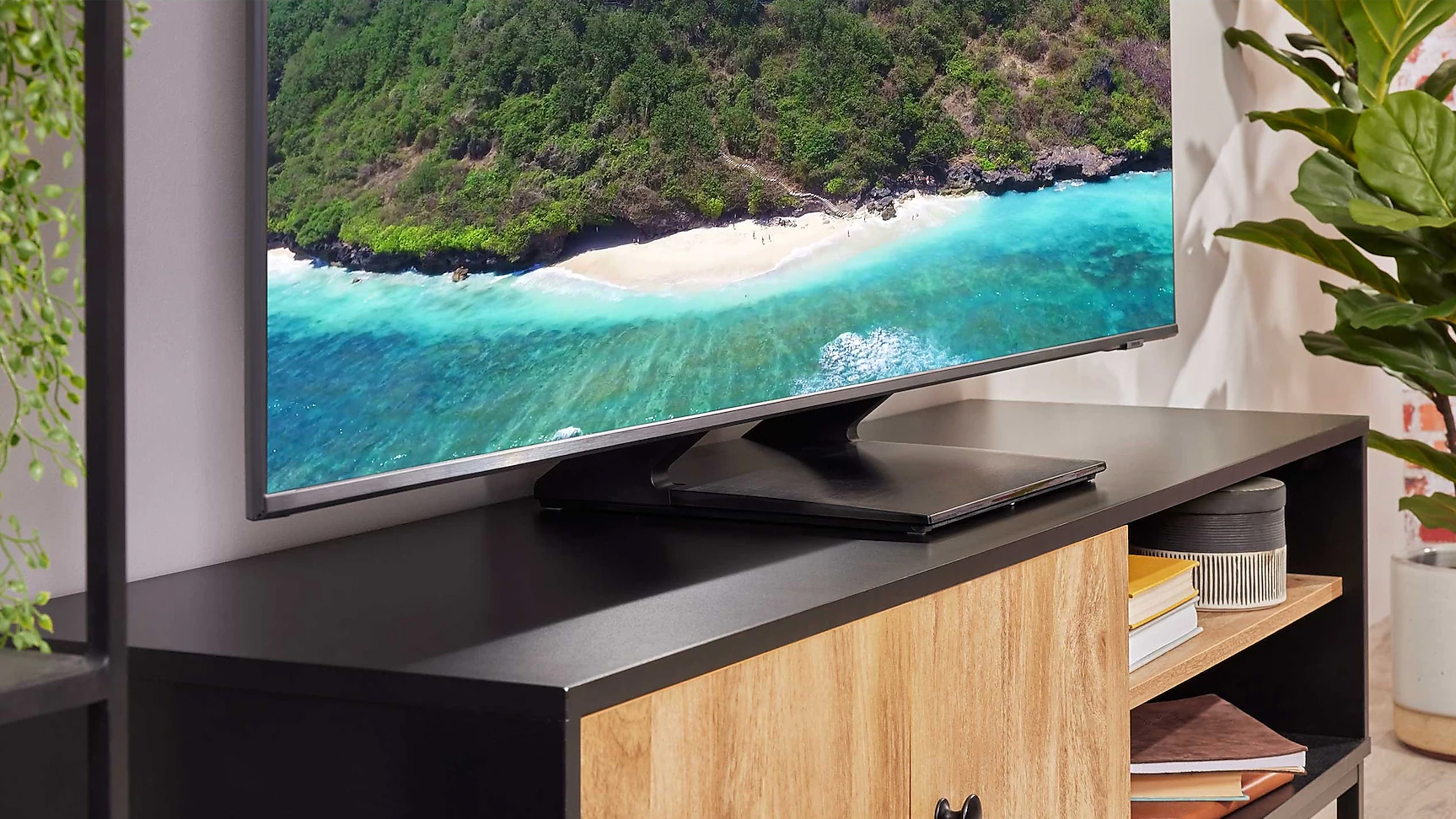
Samsung Q70A review: Design & usability
The Q70A is a mostly attractive TV built almost exclusively around the principle of thin TVs being more desirable.
The frame round the screen is extremely narrow, and even more strikingly, the rear is less than 26mm deep without its feet attached. This makes the Q70A a seriously appealing option for wall hanging. Especially as the two feet it ships with are so plain that they let the rest of the design down.
The Q70A’s Tizen-based smart TV software is excellent. Its appearance on-screen is pleasingly compact, for starters, fitting the majority of its links and features into a deck or two of icons that appear superimposed over the bottom of the picture. There’s excellent integrated voice control support too, using your choice of Google Assistant or Amazon Alexa systems (or Samsung Bixby, if that's your thing), and the initial setup guides you through everything straightforwardly enough.
The lack of a Freeview Play app can make finding catch-up content a little more of a fuss than it would be otherwise, but aside from this there’s precious little to complain about when it comes to day-to-day use of the Q70A.
One last factor to note that impacts both the Q70A’s design and usability is the way it ships with two remotes: a rather bland but still effective ‘normal’ button-filled one and a sleek ‘smart’ remote with a much reduced button count. Both work well, but the smart one will be the handset of choice for most households for regular day to day use. Especially as, impressively, the smart remote has a little solar panel on its rear rather than relying on regular batteries.
Samsung Q70A review: Verdict
The Q70A is an accomplished mid-range TV. Its picture quality is strong, its ultra-slim design is chic, and it’s unexpectedly well stocked with features for its money. Especially when it comes to gaming – it's a great option if you want something big, affordable, and with support for the latest tech.
Home cinema enthusiasts may find it limiting – we have some suggestions for you below – but for more casual living room users (ie, most people) the Q70A has plenty going for it. Especially at its current prices.
Samsung Q70A review: Also consider
Serious home cinema enthusiasts fond of watching films in dark rooms might want to consider saving up for either one of Samsung’s higher-end models with a direct backlight (with the Neo QLED models being the best of these) or the entry-level LG A1 OLED TV, which is a small premium over the Samsung Q70A, but is a major step up in contrast.
Sign up to the T3 newsletter for smarter living straight to your inbox
Get all the latest news, reviews, deals and buying guides on gorgeous tech, home and active products from the T3 experts
John Archer has been testing TVs and AV gear for over 25 years, having worked on Home Cinema Choice magazine. He's a contributor to Forbes, TechRadar, Trusted Reviews, Wired and many more places – if you've owned a TV in the last couple of decades, John's probably reviewed it somewhere. He's seen so many hot new technologies come and go, like tears in the rain.
-
 New Casio G-Shock is half sci-fi nightmare, half Y2K chic
New Casio G-Shock is half sci-fi nightmare, half Y2K chicI hate how much I love this
By Sam Cross Published
-
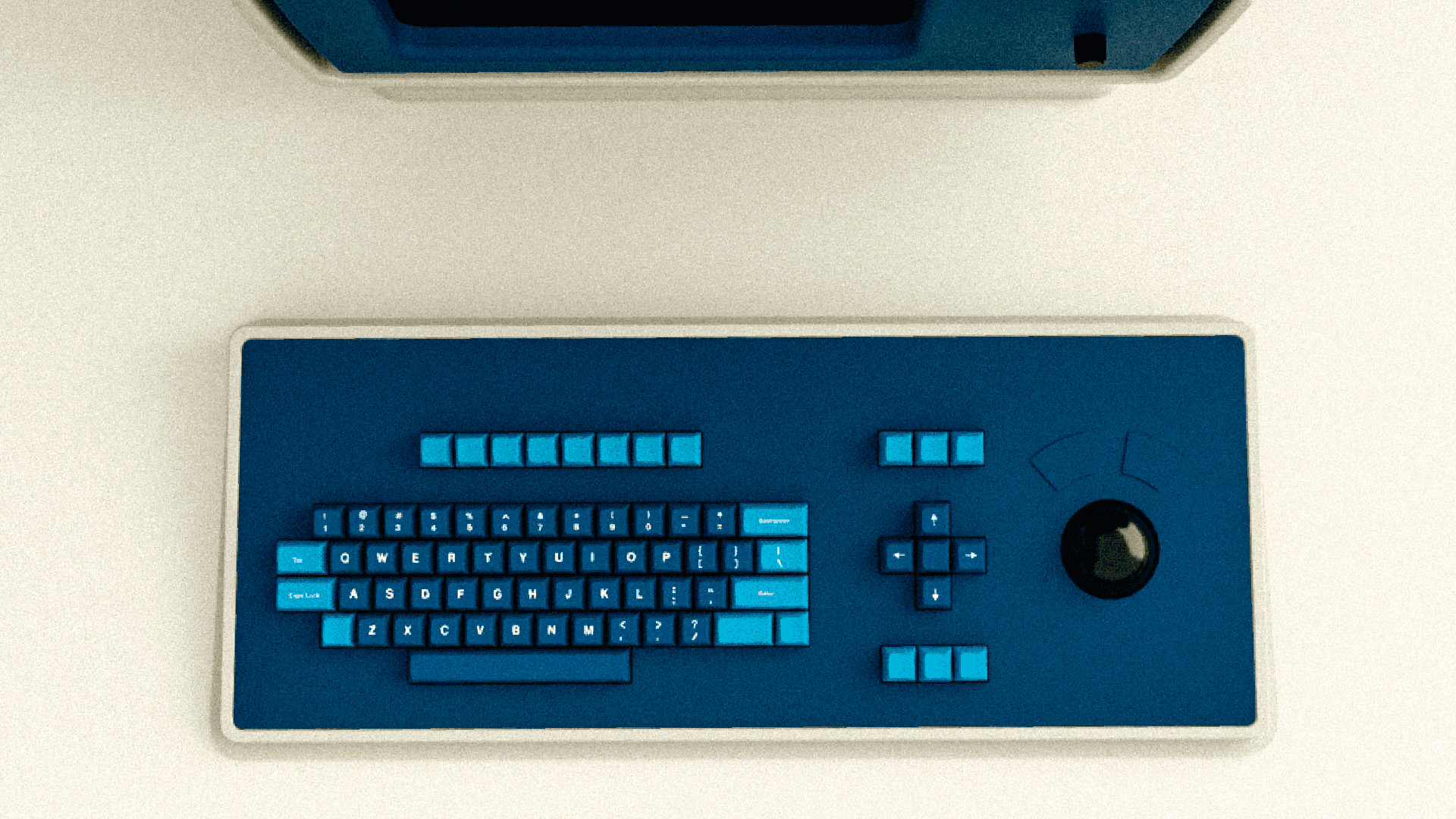 Apple's Severance computer may have been a joke, but the keyboard is coming for real
Apple's Severance computer may have been a joke, but the keyboard is coming for realTell us where we can sign up!
By Britta O'Boyle Published
-
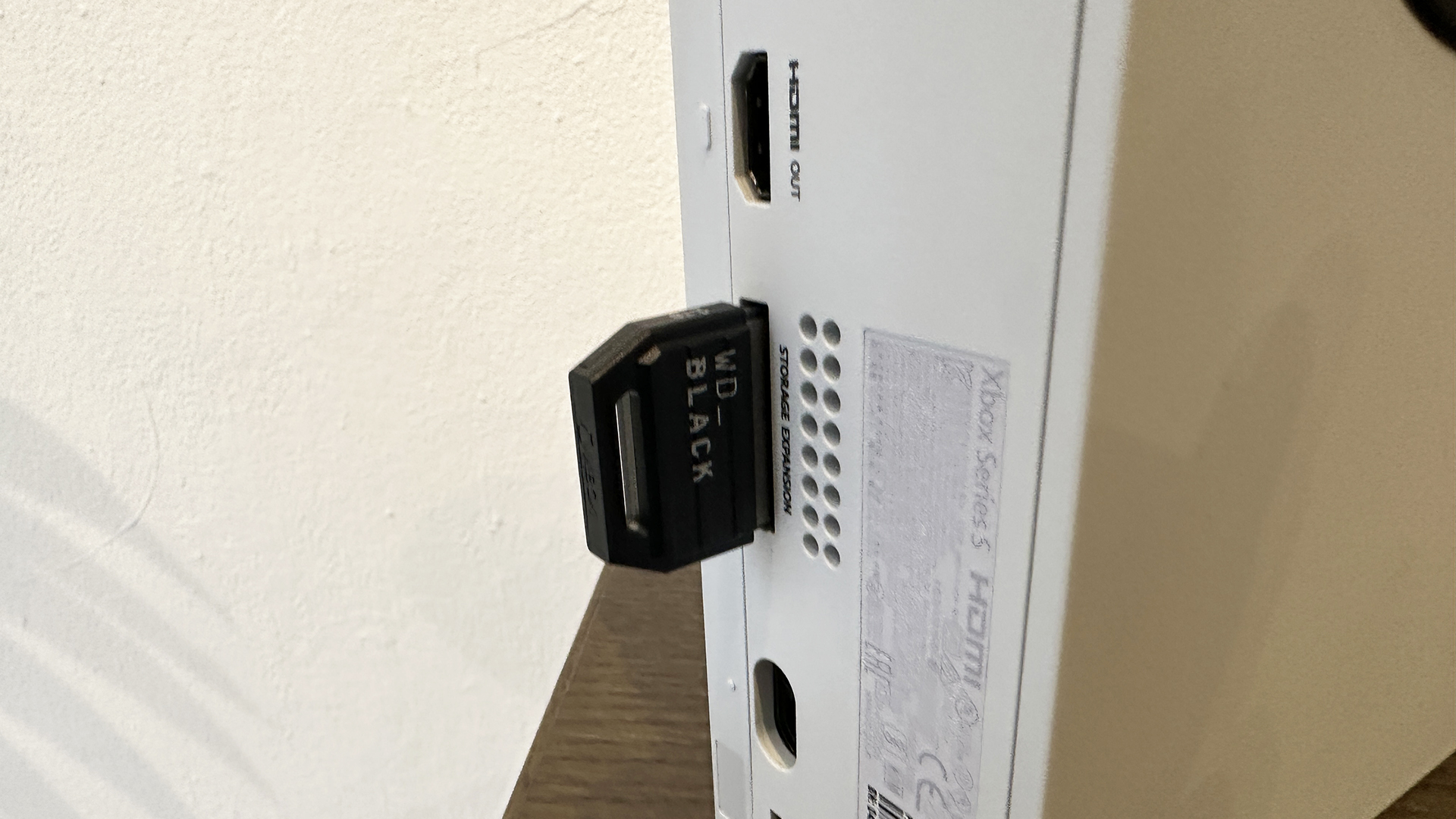 Xbox Series X/S storage space problems solved by a sneaky Xbox Game Pass update
Xbox Series X/S storage space problems solved by a sneaky Xbox Game Pass updateYou may never have to buy external storage again
By Rik Henderson Published